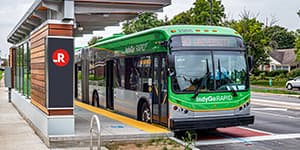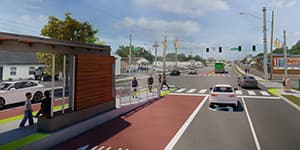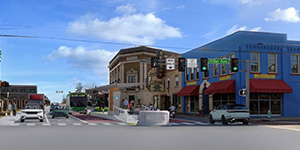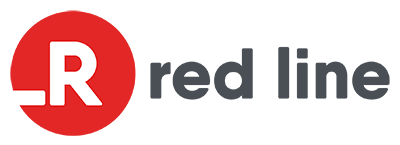IndyGo Continues to Roll Out Better Bus Service!
Beginning with the addition of weekend service in 2018, IndyGo has been working toward the implementation of the type of transit system worthy of a dedicated funding source. We’ve upgraded our services to offer every route every day of the week. We’ve designed, constructed, and launched our first bus rapid transit route, the Red Line. We’ve begun construction on the Purple Line route, which is scheduled to open in late 2024. Design for the Blue Line bus rapid transit route is progressing toward 90% completion, and IndyGo continues to modernize its fare collection system.
Along the way, we have encountered some serious challenges. Chief among them is the current bus operator shortages and the financial impact resulting from the COVID-19 pandemic, which has significantly impacted IndyGo’s ridership and revenue projections, as well as our ability to retain and grow our workforce.
To offer the greatest number of people a highly effective and efficient transit system, IndyGo relies on input from the community, historical ridership data, information about land use and community and economic development activities, and its Board adopted to make service changes throughout each year. We’re excited to be back on track with the completion of our newly improved network redesign!
IndyGo has evaluated the performance of every route and reviewed the network redesign in its entirety. We have studied and observed changes in people’s travel patterns and behaviors, took inventory of where transit riders live, work and shop, and revisited our revenue projections. Click HERE to explore IndyGo’s future service plan, 2027 Transit Network, to see how the agency is working to create a more connected-grid network by adding two more rapid transit routes and further improving our local bus service.
Red, Purple and Blue were designed for you, by you.
IndyGo’s creating its new Red, Purple and Blue Lines to help you commute more efficiently, easily and conveniently.
As part of the Marion County Transit Plan, three rapid transit lines were identified to do just that – the Red, Purple, and Blue Lines.
Red Line
The Red Line runs from Broad Ripple through downtown Indy to the University of Indianapolis, connecting several neighborhoods, major employers and cultural institutions with frequent, comfortable rapid transit service.
Continue Reading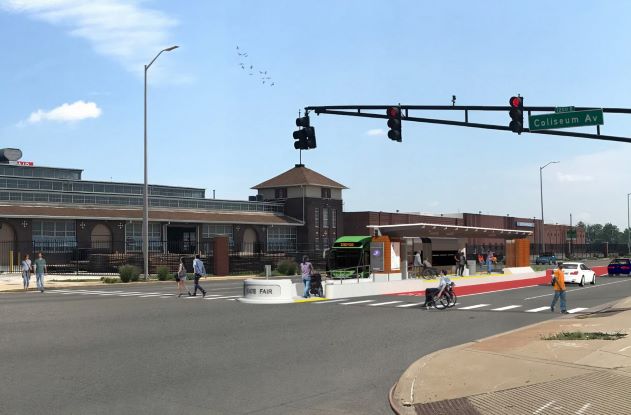
Purple Line
The Purple Line is a much-needed improvement to much-traveled route 39, bringing Bus Rapid Transit to the important Indy-Lawrence connection.
Continue Reading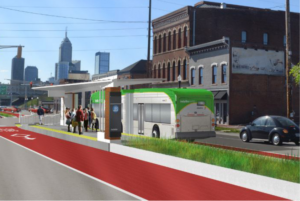
Blue Line
24 miles of rapid transit to and from the airport!
To better connect you to your city and your city to you, all along Washington Street and all the way out to the airport, IndyGo’s Blue Line will reinvent one of the most traveled local commuter routes in the IndyGo system.
Continue Reading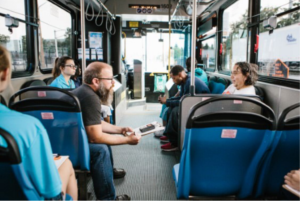
Future Service Plan (2023-2027)
Marion County Transit Plan, IndyGo is transitioning to a grid-based network, adding two additional rapid transit lines and improving its local bus service.
Continue Reading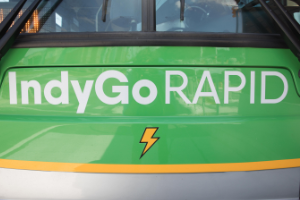
Bus Rapid Transit
Bus Rapid Transit (BRT) provides fast, comfortable, and frequent transit service. Current and future IndyGo riders will enjoy this upgraded experience on the Red, Purple, and Blue Lines.
Continue Reading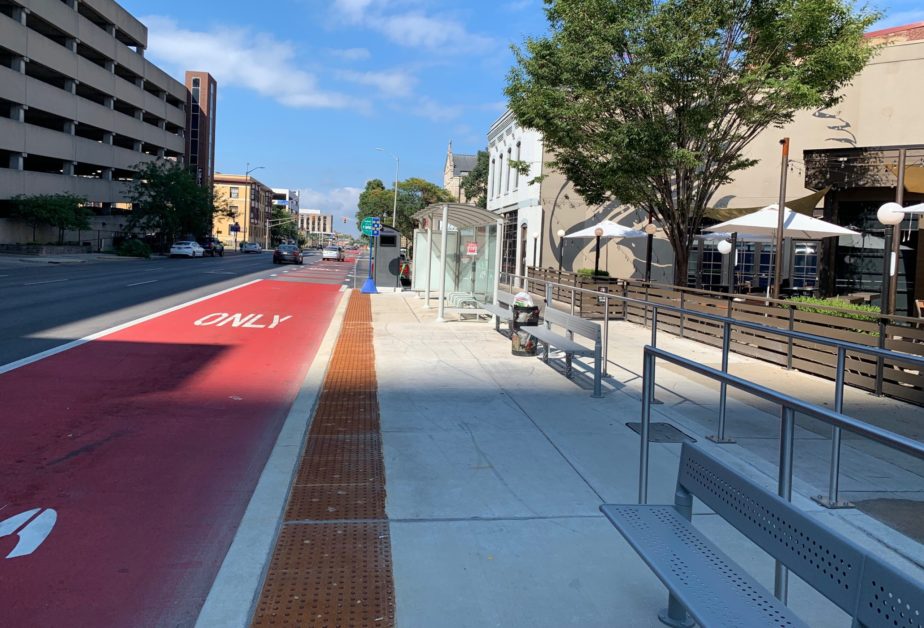
Super Stops
IndyGo and the City of Indianapolis Department of Public Works are partnering to implement significant improvements to Delaware Street and Fort Wayne Avenue.
Continue Reading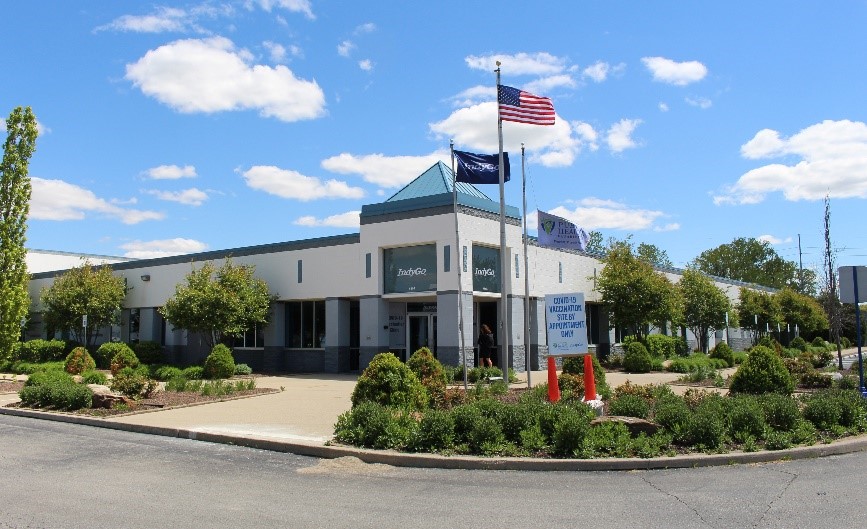
IndyGo Facilities
Due to the COVID-19 pandemic, rapid growth and the changing workforce, IndyGo has a need for additional space to accommodate employees, vehicles and operations. This space will function to improve safety and allow room for expansion opportunities.
Continue ReadingOver the next five years, IndyGo will implement the adopted 2019-2027 Capital Plan to fund and support the increased service frequency, increased service hours, and major redesigns of, and improvements to, our transit system.
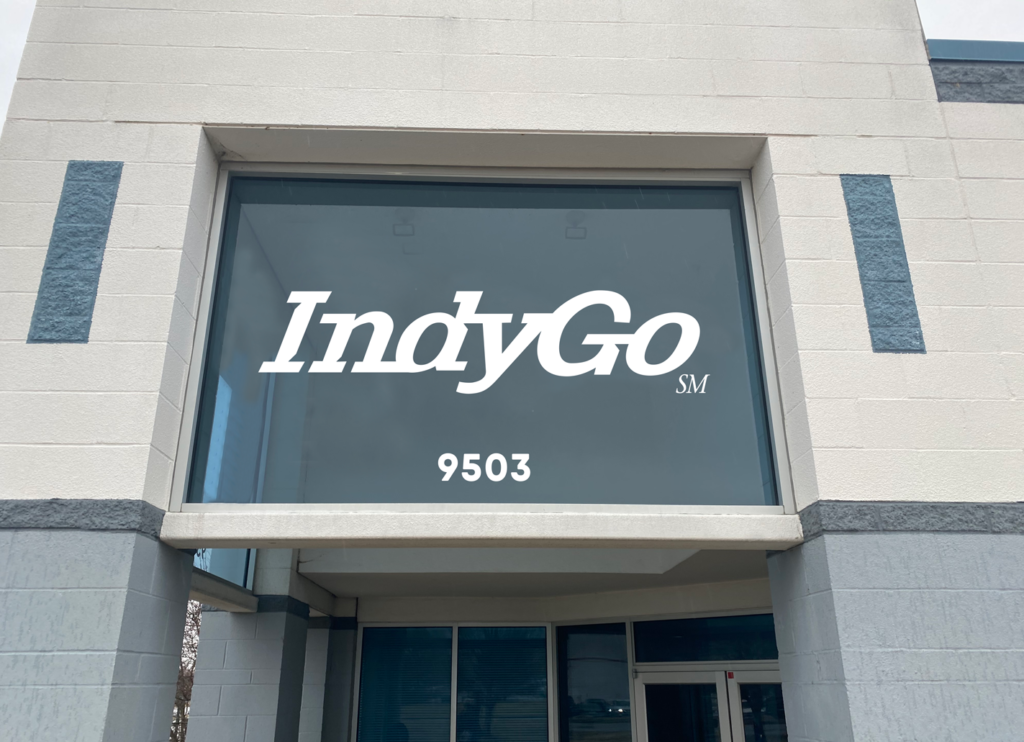 IndyGo will soon construct and renovate its newest headquarters, East Campus, located at 9503 E. 33rd St. off Post Road. The 110,910 square foot, three–building property will provide a training course for operators, multiple large public meeting spaces and additional office spaces to maintain social distancing amongst employees. IndyGo estimates that all employees will be moved into East Campus in 2023.
IndyGo will soon construct and renovate its newest headquarters, East Campus, located at 9503 E. 33rd St. off Post Road. The 110,910 square foot, three–building property will provide a training course for operators, multiple large public meeting spaces and additional office spaces to maintain social distancing amongst employees. IndyGo estimates that all employees will be moved into East Campus in 2023.
IndyGo also proposes to expand the facilities at 9503 to include 9625 E. 33rd St. in Indianapolis. The project involves renovations and construction of a new fleet terminal and maintenance facility and expanding East Campus to provide bus storage, maintenance bays and supporting spaces for offices, driver support areas, parts storage and similar supporting functions.
On June 12, 2023, the Federal Transit Administration (FTA) determined that the East Campus Expansion project met the criteria of a Categorical Exclusion under the agency’s implementing regulations of the National Environmental Policy Act (NEPA). The approved Documented Categorical Exclusion (DCE) is being published for public information. Please click on the link below to view the DCE:
Documented Categorical Exclusion
In accordance with Section 508 of the Rehabilitation Act of 1973, the main body of the DCE is Section 508 compliant. Please note that IndyGo will make the appendices of the DCE Section 508 compliant upon request. Please contact Charlie Carlino at Charles.Carlino@indygo.net or 317-559-6106 to make this request.
Section 106 Finding of Effect on Cultural Resources and Supporting Documentation
In 2014, the Indiana General Assembly allowed some Central Indiana counties to dedicate an income tax up to 0.25% for mass transit projects. On November 8, 2016, 59.4% of Marion County voters supported the tax to improve the city’s transit system. At the City County Council meeting on January 9, 2017, Proposal 3, a measure to enact a tax dedicated to transit, was introduced by Council president, Maggie Lewis. The full council voted for final adoption on Monday, February 27, 2017. Read the press release for more information.
Learn more about the Marion County Transit Plan.
Why am I hearing so much about the Red Line?
Analysis has shown that the first phase of the Red Line has the best potential for immediate success from a ridership, economic development, and federal funding standpoint. Consider the following, based on projections:
- With job connections considered the most vital indicator of ridership and economic development, the first phase of the Red Line will connect to more jobs than any other rapid transit line under consideration, and more than any other corridor in Indiana.
- If it were a city, the Red Line corridor would have a daytime population of 250,000+, and that population would be the state’s densest and most diverse.
- While the Red Line represents 1% of IndyGo’s geographical service area, it contains 15% of all daily boardings on the system.
Do competitor cities invest in transit?
Central Indiana regularly competes with regions throughout the U.S. to attract businesses and grow the workforce. Central Indiana’s competitor cities invest in transit, and most have been doing so for years. In addition, many of the cities compared here have passed successful referendums in recent years to provide additional funding and support for their transit systems.
What happens if the referendum fails?
- IndyGo still has a system to run, and it will continue to do the best job it can with the resources it has.
- Phase I of the Red Line will move forward.
- Downtown Transit Center will open.
- Real time information will come online.
- However, improvements to hours, service, connections, and wait times will be more difficult to make. IndyGo’s costs continue to grow nominally as revenues remain fairly flat. Without a dedicated funding source or growth in Marion County’s tax base, service cuts will eventually occur
What is the Marion County Transit Plan (MCTP)?
The Marion County Transit Plan begins the process of implementing Indy Connect, the multi-county transit vision for Central Indiana. The Marion County Transit Plan includes significant investment in the local bus network and three rapid transit lines on high ridership routes.
The Marion County Transit Plan includes:
- Improvements to the local bus network:
- Shorter wait times between buses
- Service earlier in the morning and later at night
- Monday – Friday: 5 AM – 1 AM
- Saturday: 6 AM – 12 AM
- Sunday: 6 AM – 10 PM
- More efficient transfers
- Advanced payment technology and real time arrival information
- All routes operating 7 days a week
- 3 rapid transit lines:
- Blue, Purple, and Phase 2 & 3 Red Transit Lines
Did the public have any input in the plan?
Legislation passed by the State legislature gives some counties in Central Indiana a new funding mechanism for transit by calling a referendum. The plan for Marion County assumes passage of a referendum in 2016 at .25% income tax ($.25 for every $100 earned) with new funding available in 2017.
Hundreds of public meetings to gather input from the public have taken place over the years to help refine what the transit priorities are for Central Indiana.
In 2014, IndyGo Forward helped set a direction for the agency’s future investments. Public discussions focused on the trade-off between coverage-based services and ridership-generating services. With comments from IndyGo Forward and Indy Connect, a specific Marion County plan has been developed.
In February of 2016, IndyGo introduced the Marion County Transit Plan to the public. Legal notices, paid radio and internet ads, on-board print and audio announcements, postings at major stops in the downtown area, direct communication to e-newsletter subscribers, social media, website updates, press releases and partner communications gave options to learn about the plan.
In just over 5 weeks, IndyGo hosted or attended 17 meetings to promote the plan and gather feedback. IndyGo collected comments at meetings, online and through the customer service call center. Staff received and reviewed 97 comments.
Learn more about the public involvement process.
How will the plan be funded?
Currently transit service in Central Indiana is funded by a combination of property taxes, federal grants, and rider fares. For any expansion to take place, the region would need to tap into other revenue sources.
Legislation passed by the State legislature in 2014 gives some counties in Central Indiana a new funding mechanism for transit by calling a referendum. The plan for Marion County assumes passage of a referendum in 2016 at .25% income tax with new funding available in 2017.
